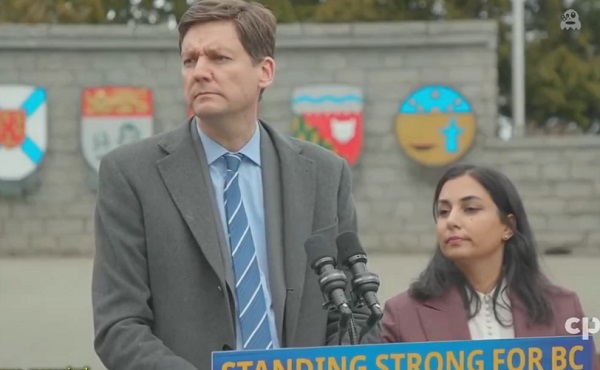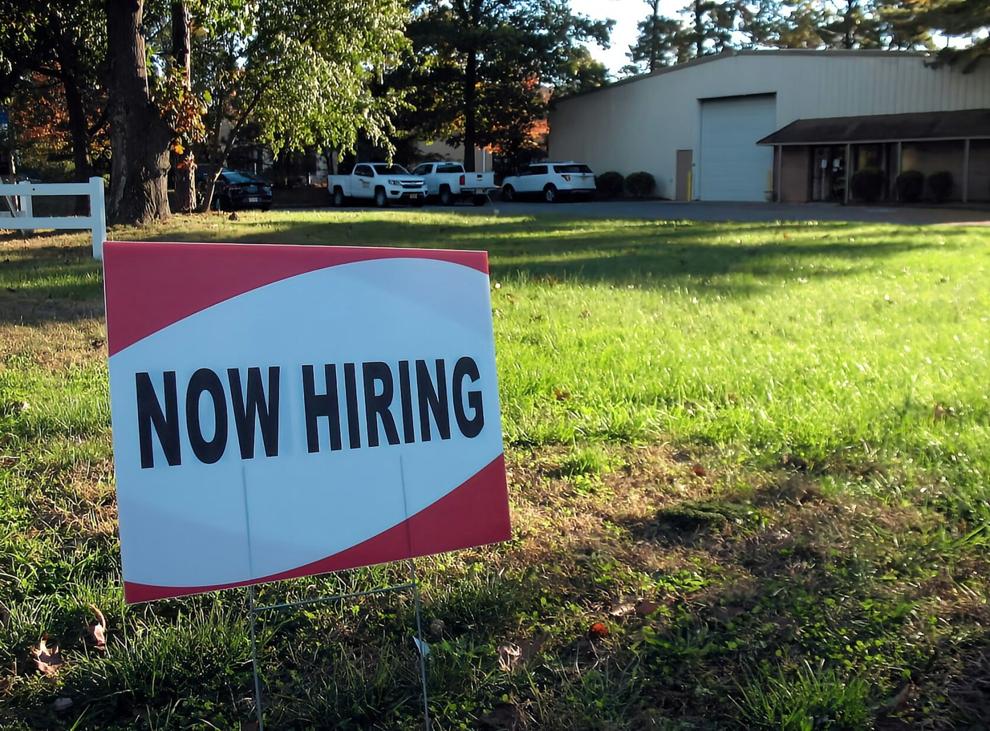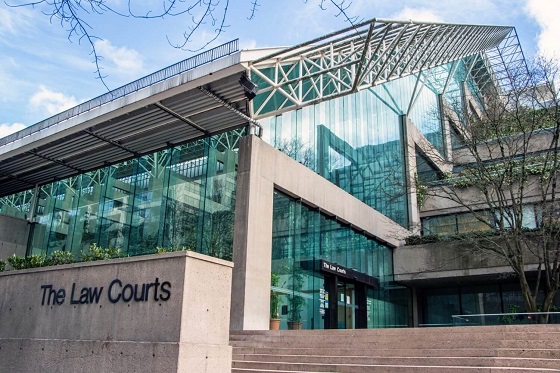Fraser Institute
Opposition says Premier Eby using tariff fight to give B.C. cabinet ‘unlimited power’

From the Fraser Institute
By Bruce Pardy
It’s been 800 years since the Magna Carta. Governments everywhere now aspire to tear down the concept that it helped establish: the rule of law. Last week, British Columbia’s NDP government introduced the Economic Stabilization (Tariff Response) Act, also known as Bill 7, which would allow Premier David Eby and his cabinet the power to take the law into their own hands without going through the elected legislature.
In this case, the justification is President Donald Trump’s tariffs. But the bill would authorize any action taken for the vague purpose of supporting the economy of B.C. or Canada, or responding to the actions of any foreign government, even if the actions haven’t happened yet. But according to Eby, “These are not sweeping powers.”
The project of concentrating power in the executive branch (i.e. cabinet) and usurping the role of legislators has a long pedigree. In theory, no office or officers are above the law or are empowered to make it up as they go. In practise, that theory counts for less and less. Governments, including in Canada, don’t like the rule of law.
But what, exactly, does “the rule of law” mean? Legal theorists say it’s complicated. It need not be. To see it clearly, compare it to the alternative: the rule of persons. When King Solomon decreed that a baby claimed by two women should be split in half, he had absolute power to decide what to do. When Henry VIII ordered that Anne Boleyn should lose her head, that was absolute power, too. In each case, tyrants exercised their personal rule for good or bad.
The “rule of law” is the opposite idea. No single authority has free reign to decide how the state will use its force. The rule of law limits the powers of those who govern.
It does so in part by separating powers between three branches of the state. The Supreme Court of Canada has said that the “separation of powers” is a fundamental feature of the Canadian Constitution. Legislatures legislate. The executive executes. Judges adjudicate. In principle, no single office or officer can alone decide what should be done.
But not in practise. Exceptions are so common today as to be ubiquitous. The Human Rights Commission, not the legislature, declares what constitutes discrimination. The police decide whether to enforce court orders. Environment ministry officials determine when environmental impacts are permissible. Cabinet decides when pipelines will be built.
But in these cases, decision-makers at least must keep themselves within the boundaries of their authorizing statute, which was passed by elected legislatures. Under Bill 7, the Eby government will take delegation to the next level. Its cabinet will have the power not just to exercise broad discretion in accordance with legislation, but to override legislation itself. The bill will allow cabinet to make exceptions to the law, modify the law’s requirements, limit the law’s application, or establish powers or duties in place of the law. And not just a specific law, but any enactment on the books. The cabinet’s edicts will be valid for more than two years, until May 2027.
In 1539, the Statute of Proclamations conferred on King Henry VIII the power to rule by decree, directing that the King’s proclamations should be obeyed as though they were legislation. Such provisions, since known as “Henry VIII clauses,” are controversial because they eviscerate limits on executive power. Yet they may be constitutionally permissible in Canada. Parliament cannot abdicate its functions, the Supreme Court of Canada wrote in 1918, in a case considering the government’s conscription orders under the broad powers of the War Measures Act of 1914. But Parliament can pass legislation that delegates its powers to the executive as it sees fit. As long as the legislature retains the power to reverse the delegation, the theory goes, then separation of powers remains intact.
The rule of law is inconvenient. It gets in the way of governments and officials crafting solutions to problems they perceive as important. That’s not its downside but its purpose. Even when government efforts are well-intentioned, the power of officials to solve problems can pose a more serious threat to citizens than the problem itself. As the late Alan Borovoy, former general counsel of the Canadian Civil Liberties Association, once put it, “The source of the most insidious peril is not evil wrongdoers seeking to do harm, but parochial bureaucrats seeking to do good.” If the modern administrative state is incompatible with the rule of law, then the state should be required to adapt. For decades, the current has flowed strongly in the other direction.
Crises are an ideal time for the state to advance into territory from which it will not wish to retreat. COVID-19 was the previous excuse. Now the threat of American tariffs is the latest justification to declare an emergency and discard the limitations of the rule of law. Even impending calamity does not justify the tyranny of unfettered discretion. Boundless authority to respond to circumstances is an unbearable licence to dictate.
This commentary is based on previous commentaries.
Business
Residents in economically free states reap the rewards

From the Fraser Institute
A report published by the Fraser Institute reaffirms just how much more economically free some states are compared with others. These are places where citizens are allowed to make more of their economic choices. Their taxes are lighter, and their regulatory burdens are easier. The benefits for workers, consumers and businesses have been clear for a long time.
There’s another group of states to watch: “movers” that have become much freer in recent decades. These are states that may not be the freest, but they have been cutting taxes and red tape enough to make a big difference.
How do they fare?
I recently explored this question using 22 years of data from the same Economic Freedom of North America index. The index uses 10 variables encompassing government spending, taxation and labour regulation to assess the degree of economic freedom in each of the 50 states.
Some states, such as New Hampshire, have long topped the list. It’s been in the top five for three decades. With little room to grow, the Granite State’s level of economic freedom hasn’t budged much lately. Others, such as Alaska, have significantly improved economic freedom over the last two decades. Because it started so low, it remains relatively unfree at 43rd out of 50.
Three states—North Carolina, North Dakota and Idaho—have managed to markedly increase and rank highly on economic freedom.
In 2000, North Carolina was the 19th most economically free state in the union. Though its labour market was relatively unhindered by the state’s government, its top marginal income tax rate was America’s ninth-highest, and it spent more money than most states.
From 2013 to 2022, North Carolina reduced its top marginal income tax rate from 7.75 per cent to 4.99 per cent, reduced government employment and allowed the minimum wage to fall relative to per-capita income. By 2022, it had the second-freest labour market in the country and was ninth in overall economic freedom.
North Dakota took a similar path, reducing its 5.54 per cent top income tax rate to 2.9 per cent, scaling back government employment, and lowering its minimum wage to better reflect local incomes. It went from the 27th most economically free state in the union in 2000 to the 10th freest by 2022.
Idaho saw the most significant improvement. The Gem State has steadily improved spending, taxing and labour market freedom, allowing it to rise from the 28th most economically free state in 2000 to the eighth freest in 2022.
We can contrast these three states with a group that has achieved equal and opposite distinction: California, Delaware, New Jersey and Maryland have managed to decrease economic freedom and end up among the least free overall.
What was the result?
The economies of the three liberating states have enjoyed almost twice as much economic growth. Controlling for inflation, North Carolina, North Dakota and Idaho grew an average of 41 per cent since 2010. The four repressors grew by just 24 per cent.
Among liberators, statewide personal income grew 47 per cent from 2010 to 2022. Among repressors, it grew just 26 per cent.
In fact, when it comes to income growth per person, increases in economic freedom seem to matter even more than a state’s overall, long-term level of freedom. Meanwhile, when it comes to population growth, placing highly over longer periods of time matters more.
The liberators are not unique. There’s now a large body of international evidence documenting the freedom-prosperity connection. At the state level, high and growing levels of economic freedom go hand-in-hand with higher levels of income, entrepreneurship, in-migration and income mobility. In economically free states, incomes tend to grow faster at the top and bottom of the income ladder.
These states suffer less poverty, homelessness and food insecurity and may even have marginally happier, more philanthropic and more tolerant populations.
In short, liberation works. Repression doesn’t.
Alberta
Alberta Next Panel calls for less Ottawa—and it could pay off

From the Fraser Institute
By Tegan Hill
Last Friday, less than a week before Christmas, the Smith government quietly released the final report from its Alberta Next Panel, which assessed Alberta’s role in Canada. Among other things, the panel recommends that the federal government transfer some of its tax revenue to provincial governments so they can assume more control over the delivery of provincial services. Based on Canada’s experience in the 1990s, this plan could deliver real benefits for Albertans and all Canadians.
Federations such as Canada typically work best when governments stick to their constitutional lanes. Indeed, one of the benefits of being a federalist country is that different levels of government assume responsibility for programs they’re best suited to deliver. For example, it’s logical that the federal government handle national defence, while provincial governments are typically best positioned to understand and address the unique health-care and education needs of their citizens.
But there’s currently a mismatch between the share of taxes the provinces collect and the cost of delivering provincial responsibilities (e.g. health care, education, childcare, and social services). As such, Ottawa uses transfers—including the Canada Health Transfer (CHT)—to financially support the provinces in their areas of responsibility. But these funds come with conditions.
Consider health care. To receive CHT payments from Ottawa, provinces must abide by the Canada Health Act, which effectively prevents the provinces from experimenting with new ways of delivering and financing health care—including policies that are successful in other universal health-care countries. Given Canada’s health-care system is one of the developed world’s most expensive universal systems, yet Canadians face some of the longest wait times for physicians and worst access to medical technology (e.g. MRIs) and hospital beds, these restrictions limit badly needed innovation and hurt patients.
To give the provinces more flexibility, the Alberta Next Panel suggests the federal government shift tax points (and transfer GST) to the provinces to better align provincial revenues with provincial responsibilities while eliminating “strings” attached to such federal transfers. In other words, Ottawa would transfer a portion of its tax revenues from the federal income tax and federal sales tax to the provincial government so they have funds to experiment with what works best for their citizens, without conditions on how that money can be used.
According to the Alberta Next Panel poll, at least in Alberta, a majority of citizens support this type of provincial autonomy in delivering provincial programs—and again, it’s paid off before.
In the 1990s, amid a fiscal crisis (greater in scale, but not dissimilar to the one Ottawa faces today), the federal government reduced welfare and social assistance transfers to the provinces while simultaneously removing most of the “strings” attached to these dollars. These reforms allowed the provinces to introduce work incentives, for example, which would have previously triggered a reduction in federal transfers. The change to federal transfers sparked a wave of reforms as the provinces experimented with new ways to improve their welfare programs, and ultimately led to significant innovation that reduced welfare dependency from a high of 3.1 million in 1994 to a low of 1.6 million in 2008, while also reducing government spending on social assistance.
The Smith government’s Alberta Next Panel wants the federal government to transfer some of its tax revenues to the provinces and reduce restrictions on provincial program delivery. As Canada’s experience in the 1990s shows, this could spur real innovation that ultimately improves services for Albertans and all Canadians.
-

 Haultain Research1 day ago
Haultain Research1 day agoSweden Fixed What Canada Won’t Even Name
-

 Business1 day ago
Business1 day agoWhat Do Loyalty Rewards Programs Cost Us?
-

 Business14 hours ago
Business14 hours agoLand use will be British Columbia’s biggest issue in 2026
-

 Digital ID2 hours ago
Digital ID2 hours agoThe Global Push for Government Mandated Digital IDs And Why You Should Worry
-

 Energy15 hours ago
Energy15 hours agoWhy Japan wants Western Canadian LNG
-

 Business12 hours ago
Business12 hours agoMainstream media missing in action as YouTuber blows lid off massive taxpayer fraud
-

 Business11 hours ago
Business11 hours agoStripped and shipped: Patel pushes denaturalization, deportation in Minnesota fraud
-

 Energy3 hours ago
Energy3 hours agoRulings could affect energy prices everywhere: Climate activists v. the energy industry in 2026










